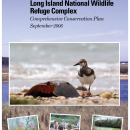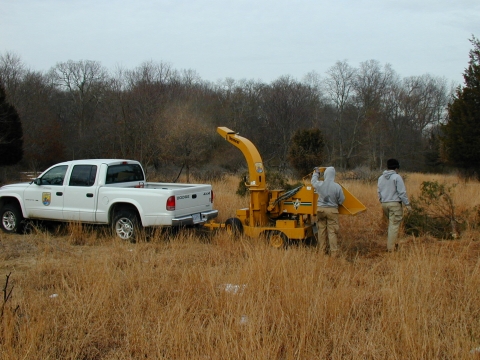What We Do
Wildlife conservation is at the heart of the National Wildlife Refuge System. It drives everything on U.S. Fish and Wildlife Service lands and waters managed within the Refuge System, from the purposes for which a national wildlife refuge national wildlife refuge
A national wildlife refuge is typically a contiguous area of land and water managed by the U.S. Fish and Wildlife Service for the conservation and, where appropriate, restoration of fish, wildlife and plant resources and their habitats for the benefit of present and future generations of Americans.
Learn more about national wildlife refuge is established to the recreational activities offered to the resource management tools used. Using conservation best practices, the Refuge System manages Service lands and waters to help ensure the survival of native wildlife species.
Refuges deploy a host of scientifically sound management tools to address biological challenges. These tools span active water management to wilderness character monitoring, all aimed at ensuring a balanced conservation approach to benefit both wildlife and people. At this field station our conservation tool box includes:
Invasive Species
Invasive plants are a threat because they displace native plant and animal species, degrade wetlands and other natural communities, and reduce natural diversity and wildlife habitat values by out-competing native species for light, water, and nutrients. Invasive plants do occur on the refuge and threaten both aquatic and terrestrial systems.
Once invasive plants have become established, their characteristic abilities to establish easily, reproduce prolifically, and disperse readily make getting rid of them expensive and labor-intensive. Many of them cause measurable economic impacts, particularly in agricultural fields. Preventing new invasions is extremely important for maintaining biodiversity and native plant populations. Controlling affected areas requires extensive partnerships with adjacent landowners and state and local government agencies.
Invasive species that may pose a threat to refuge resources include black locust, mile-a-minute, common mullein, Japanese barberry, wineberry and phragmites.
Prescribed Fire
This management technique benefits a variety of natural resources. In areas of Long Island where prescribed fire has been used, the refuge has been able to reduce fuels for protection from wildfire and restore a natural ecological process—fire—to wildlands. Burning helps to maintain fire dependent vegetation (pitch pine, warm seasonal grasses), manage grasslands, remove non‑native plants and improve feeding and nesting areas for wildlife.
Management and Conservation
Management Goals
Refuge management goals are:
- Provide and manage a diversity of high quality habitats to support breeding, migrating and/or wintering birds, threatened & endangered species, and fish.
- Maintain high quality habitats for all native wildlife and plant species.
- Establish and maintain partnerships to benefit wildlife for present and future generations
Our Projects and Research
Grassland Restoration
Refuge staff restored historic grassland areas by removing young red cedar and oak trees in former grassland areas using a low-ground pressure mower. Removal of red cedar and oak allows native grasses and other plants to grow in these areas, as well as reducing hazardous fuels and decreasing the possibility of wildfires on the refuge. Grassland restoration provides improved habitat for grassland birds such as eastern meadowlark, bobolink, and savannah sparrow, as well as rare plants and animals.
Law Enforcement
The mission of the National Wildlife Refuge System Law Enforcement program is:
"Through education and enforcement we protect our employees, volunteers, and visitors; safeguard the public’s investment in facilities and equipment; and protect the integrity of the habitat and the wildlife resources of the National trust resource which is the 150 million acre National Wildlife Refuge System.”
Laws and Regulations
To protect the natural resources of the refuge and to provide all visitors with a safe and enjoyable wildlife experience, please observe all refuge signs and regulations in handouts and brochures.

